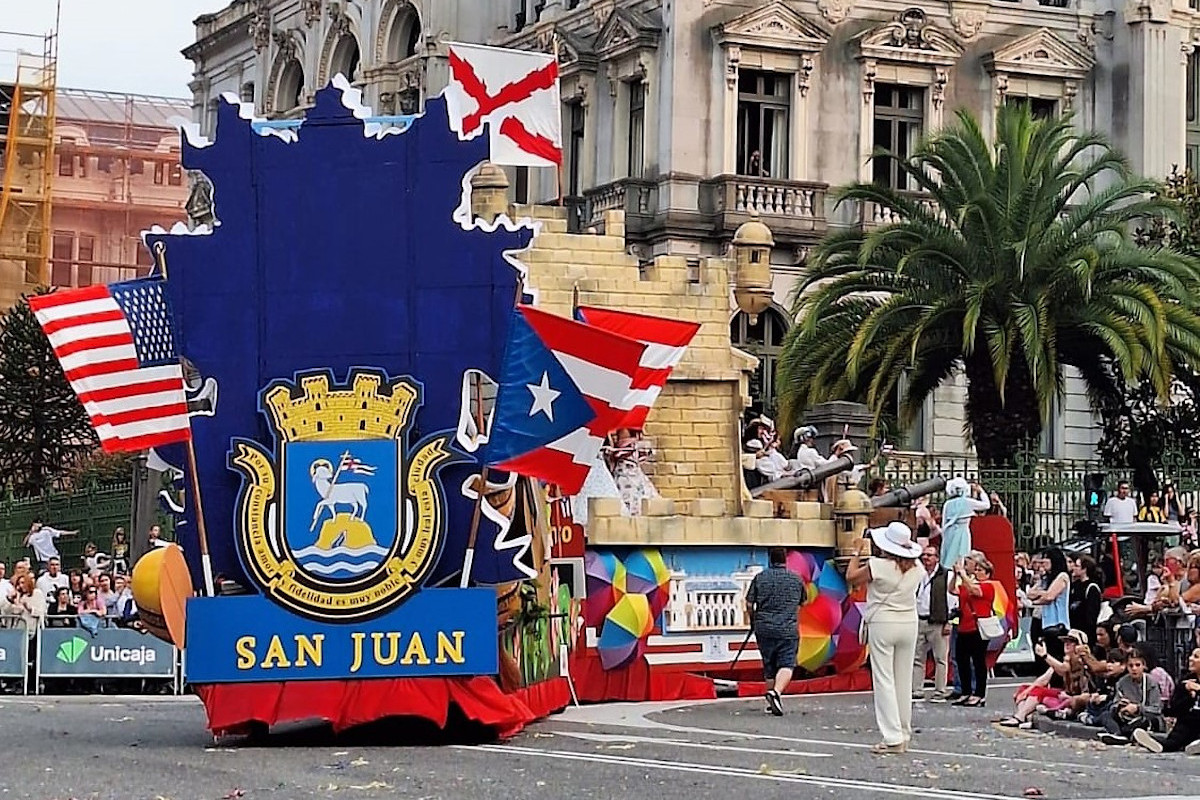The city of Oviedo hosted this Thursday the traditional parade of America's Day (Día de América) in Asturias, which celebrates its 72nd edition, in a parade with more than 2,000 extras and eleven large floats to pay tribute to the American countries. This is a Festival of National Tourist Interest organized by the Sociedad Ovetense de Festejos (SOF) and with the collaboration of Unicaja.
Puerto Rico was again represented in the parade with its own float, being the country honored and to which Pipo Prendes has dedicated a song entitled 'Mi Puerto Rico'. Countries such as Argentina, Mexico or Brazil also displayed floats and Asturian councils such as Siero, Cabranes, Parres, Colunga or Belmonte de Miranda had a special role. In addition, tribute was paid to Astur CF for its centenary, and to the Asturian centers in Latin America with a float.
In total, eleven large floats traveled along Uría Street and around the Campo de San Francisco, along with about twenty haigas and classic vehicles, folk groups, bagpipers, bands, extras and soccer players.
Attending the parade was, among other authorities, the mayor of Oviedo, Alfredo Canteli. Representing Unicaja were José Marcos Fernández, head of Corporate Banking North; Ana Fonseca, head of the Central Asturias Area; Marcos González, head of Private Banking Oviedo; and Jesús Nogales, manager of Private Banking Oviedo.
Floats and haigas
The parade of America's Day in Asturias, popularly known as “the floats” coincides with the celebration of the Fiestas de San Mateo in Oviedo.
The idea of celebrating this parade arose in the 40s of the last century. It was a tribute to the large number of Asturian emigrants to America, who in summer returned to Asturias and showed their large and luxurious cars, called haigas.
The first parade, organized on 23 September 1950, gathered thousands of people and counted with about 60 haigas decorated with flowers and flags, nine music bands and eight floats. The floats, designed by the Oviedo painter Alfonso Iglesias, represented the emigrant's farewell, the ship that takes them to America, the main destination countries - Cuba, Mexico and Argentina - and the return of the emigrant to Spain.
Over the years, the parade has evolved and adapted to society and the times. Today, it is a tribute both to the Asturians who left and to the thousands of immigrants who reside in Asturias
